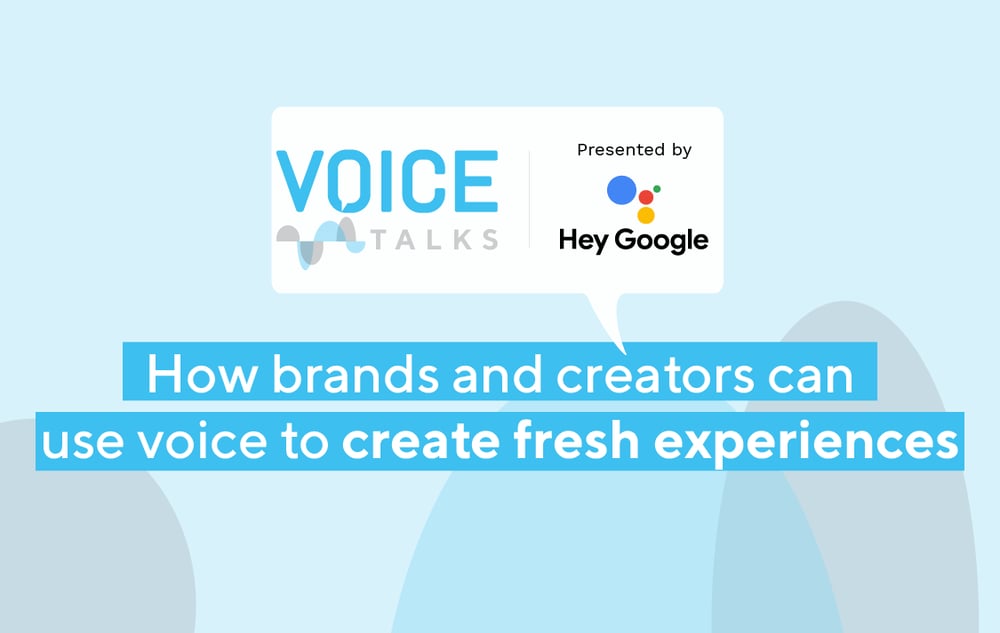How brands and creators can use voice to create fresh experiences
VOICE Talks 21-03-16 Sam Burns, Growth Marketing Manager at Voiceflow 3 min read

Voice is an incredible opportunity for brands to establish new channels. The best voice strategies help to foster authentic, memorable, and stand-out experiences for a user, which are essential for building an audience today. Although I'm new to voice this year, my past experience in marketing has given me a fresh perspective to understand the ways brands can leverage voice to reach their customers.
But, just like any other emerging medium, that strategy for success is far from being clearly defined. While many businesses and creators are doing wonders with voice, there are still many opportunities to uncover.
A new type of conversation
While some brands are still fine-tuning their experiences, individuals can benefit from voice or conversational channels as well.
Much like companies, individuals are looking to stand out. My application process at Voiceflow was no different. I knew that to make a meaningful connection, I needed to market myself, and ultimately create space for a conversation.
The big question: How could I start a conversation even before I got the interview?
To do that, I created my own resume assistant app – a voice experience that let the hiring manager get to know me, ask questions and ultimately engage with my personality and background before I even had a chance to meet them.
Instead of reading a resume to learn about my work or scrolling through Twitter to understand my personality, they're prompted to ask. Layering (and leading with) this voice medium alongside the written resume or portfolio website was a game-changer – a strategy that helped me stand out, and one that many companies can benefit from as well.
Brand strategy
Voice creates opportunity outside of the confines of text and static assets - it creates experiences. And impactful experiences are the most valuable currency to brands today.
That said, in war rooms around the world, leadership teams might be making one of two critical mistakes right now:
- Ignoring conversational channels entirely because their traditional marketing efforts are working (as of now).
- Reallocating all resources to voice expecting consumers to only interact via those channels.
There's a different introduction article for the teams at number 1 to understand the importance of voice.
For the 2s that understand the opportunity and are building conversations, it is vital not to re-invent the marketing mix. Do not replace an entire content strategy with voice-only options - layer and lead with those channels. Just as the job app caught attention with a voice experience alongside the graphic and written assets, brands have an opportunity to do the same.
Building multi-modal experiences
Take a bank, for example. Rolling out a banking assistant to quickly transfer funds, check balances, or find a location is a smart strategy. However, if that same bank simultaneously shuttered their mobile app and customer service teams, the consumer experience would be miserable.
Instead, layering and leading with the banking assistant opens up countless top-of-funnel opportunities for engaging with customers. The bank adds a broad set of unique, natural touchpoints for existing or new customers. Multi-modal brands will win, and voice is the communication mode with the least amount of friction for most consumers.
As these teams continue to map customer journeys, they must plan from a multi-modal perspective. Conversation designs can span countless channels, including IVR, web chat, mobile apps, in-car assistant, and smart speakers (to name a few). Brands that meet the customer where they are with authentic and natural conversation will improve retention, acquisition, and revenue. It all starts however, with a engaging experience and a way to stand out.
If this topic is interesting, you can learn more about voice and conversation design by subscribing to VOICE Talks - a monthly discussion with experts about the state of everything voice.
Are you ready to start building a conversation experience? Start with Voiceflow here.
